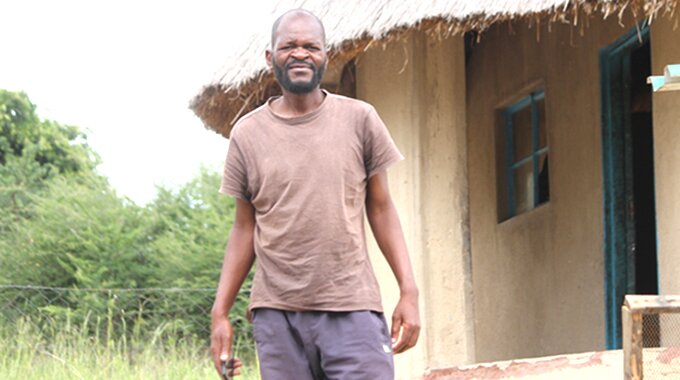Zimbabwe was first made “open for business” by the railways reaching the country in the 1890s and the network being steadily expanded over the decades, with the last link, that from West Nicholson to Beitbridge, actually coming well after independence.
For a commodity exporter of minerals, agricultural produce and livestock, the railways were the arteries of trade — both for internal movement of goods from mine and farm to factory siding and to get what we were selling to the world to the ports in Mozambique and South Africa.
Major imports of raw materials were brought up from the ports or neighbouring producers cheaply and efficiently by rail.
The motor vehicle reached Zimbabwe a decade after the first train, but even as vehicle quality improved, strip roads were laid in the 1930s, the wide tar from the 1950s, while the train dominated both heavy goods and much intercity passenger traffic.
Motive power moved from smaller steam engines, through the giant articulated steam Peacock-Beyer-Garrets, into the diesel electric era and then on the central spine to pure electric.
Advertisement
And then, along with a lot of our infrastructure, the railways went rapidly downhill from the mid-1990s and now are only a shadow of what they once were and what they should still become again.
Railways move bulky goods at far lower cost than road transport and at a minute fraction of the cost of air transport.
Despite growing sophistication in the manufacturing sector, the backbone of Zimbabwe’s economy and our exports remain commodities and these are bulky goods from mines and farms that can be brought more cheaply to our factories by train and which can be far more competitive on world markets if they can be taken to the ports of our neighbours by rail.
The huge capital investment now required to build railways would make us think very carefully before we decided to start from scratch.
But the railways, although run down, are physically there along with the rights of way, sidings, bridges and even stations in city and town centres. Even many factories in the heavy industrial sites of our major urban centres still have sidings at their rear, dating from the days when such sites were considerably more desirable than factory sites without rail access. No one uses them now, but they exist.
Rehabilitating the railway network and buying new locomotives and rolling stock would therefore be a worthwhile investment, but one that would be difficult for the Government to finance at this stage in our economic recovery.
Yet having a functioning railway system would make that recovery easier and faster.
This is why the Government has been willing to entertain proposals from private business groups to breathe life back into the railways.
Unfortunately, the first such plan did not pan out as expected, but that is no reason to reject the concept.
What it does mean is that we need to look at any such plans very carefully in future.
Advertisement
We should also be ready to think of multiple operators.
There are good grounds for the track and associated support and signal systems to be under one authority, but to allow more flexibility on the number of entities that are allowed to run trains.
After all, our road network is State-owned, but 99 percent of vehicles on those roads are privately-owned.
Air traffic has always had separate ownership of airports and airplanes.
Regional cooperation on improving rail services seems wise and is probably essential.
Southern Africa, like most of Africa outside East Africa, uses the same gauge, the Cape gauge, which is about three quarters of the standard gauge used in most of Europe, America and Asia.
East Africa uses a slightly narrower gauge, although Kenya is now upgrading some lines to standard gauge, and that huge investment by a fast growing economy is an indicator that the railways are not dead in Africa but still very much alive and seen as a major tool of accelerating economic growth.
This somewhat narrower Cape gauge and associated tighter turns, and the need for tighter turns was what set the gauge in the first place, means that we cannot run bullet trains but it does mean that we can restore a regional rail grid with the same wagons running from ports in five countries into the whole of SADC.
A future upgrade of gauge would probably have to be regional.
But the advantages of regional rail grid are immense.
Advertisement
Zimbabwe used to ship coke and coal around good chunks of the region, for example, commodities that are priced out of many markets if shipped by road but which actually were the catalyst for the first railways in the world.
At the same time, suitable rolling stock would allow commuter trains to be restored, and if need be the right of ways in urban areas are wide enough for double track to be laid.
The long-desired rail link from Harare to Chitungwiza, with the spur into the south-west suburbs of Harare or even routed past these suburbs, would move greater Harare into the modern age.
The main east-west line would handle two other two satellite towns plus two other large blocks of high-population suburbs and the branch line to the north would even link up with the new Mount Hampden development plus tie Mazowe to Harare. So, for many reasons, the Second Republic needs to move the resuscitation of the railways, in both national and regional contexts, higher up the ladder.
This means we must be open to proposals that help, although we need to look at these very closely before uncapping a pen, and we should not be afraid to assemble our own proposals, as a nation and in cooperation with our neighbours.
– HERALD








